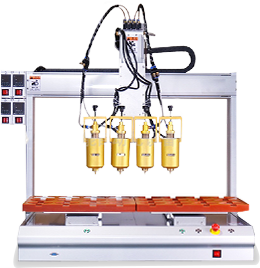

Automotive precision brass tubular parts are key basic parts for automotive fluid transmission, signal conduction and structural support systems. They are made of high-quality brass (such as H62, H65) through high-precision extrusion, drawing and precision cutting processes. They are hollow tubular structures with smooth and clean inner walls. The outer walls can be processed with threads, slots and other connection structures according to needs, and are suitable for automotive fuel lines, brake fluid channels, cooling systems and sensor signal transmission lines.
Core advantages | Technical highlights | Application value |
Corrosion resistance and stable transmission | Using H62/H65 brass, with high copper content and few impurities, salt spray test for more than 1000 hours, inner wall roughness ≤Ra0.8μm | Ensure long-term stable transmission of fuel and brake fluid, adapt to various automotive fluids and signal systems, and reduce the risk of failure |
High-precision adaptability | Dimensional tolerance is controlled at ±0.02mm, roundness error ≤0.01mm, and threaded and special-shaped interfaces can be customized | Accurately match the pipelines and sensor installations of the automotive engine, chassis and other parts, reduce assembly gaps, and improve system reliability |
Thermal conductivity and lightweight | The thermal conductivity of brass is 100 - 110W/(m・K), and the density is only 8.4 - 8.5g/cm³, which is more than 30% lighter than steel pipes. | Help the automotive cooling system to dissipate heat efficiently, while reducing the weight of the vehicle, improving fuel economy and handling |
Flexible process customization | Supports secondary processing such as cold bending, expansion, shrinking, welding, etc., and the surface can be tinned or nickel-plated to enhance protection | Meet the personalized design and performance requirements of different parts of the car (such as fuel pipes need to be oil-resistant and brake pipes need to be pressure-resistant) |
Material and process
Material selection: H62 brass contains 60.5-63.5% copper, has good mechanical properties, and is suitable for high-pressure pipelines (such as brake pipes); H65 brass contains 63.5-68% copper, has good plasticity and corrosion resistance, and is commonly used in fuel pipes and sensor air pipes.
Processing technology: Continuous extrusion molding is used to ensure pipe consistency, CNC precision cutting controls length and port accuracy, the inner wall is ultrasonically cleaned and degreased to ensure cleanliness without impurities, and the surface can be plated to improve protection and compatibility.
Project | Index | Description |
Diameter range | Φ3 - Φ50mm | Covering the needs of automotive micro sensor tubes to large heat dissipation tubes |
Wall thickness range | 0.5 - 3mm | Customized according to pressure and flow requirements, thin wall thickness is suitable for small flow and high pressure scenarios |
Tensile strength | ≥300MPa | Ensure the structural integrity of the pipeline under automotive vibration and pressure shock |
Working temperature | -40℃ - 120℃ | Adapt to the high temperature and extreme cold environment of the automotive engine compartment, with stable performance |
Applicable medium | Fuel, brake fluid, coolant, gas, etc. | Meet the needs of multi-system fluid and signal transmission |
Application scenarios
Fuel system: As the injector oil pipe and fuel distribution pipe, it can accurately transport fuel, and the smooth inner wall reduces carbon deposits, ensures the accuracy of engine fuel injection, and improves power output and fuel consumption performance.
Braking system: used for brake fluid pipelines, high strength and corrosion resistance ensure that the brake fluid does not leak, quickly transmit brake pressure, shorten brake response time, and enhance driving safety.
Cooling system: As coolant distribution pipes and warm air pipes, it efficiently conducts heat, and with the advantage of lightweight, it helps the engine and the cooling/heating system in the car to operate stably and optimize the driving environment.
Intelligent sensing: provides signal transmission channels for tire pressure sensors and temperature sensors, with low signal loss and high protection, ensuring real-time and accurate feedback of sensor data, and supporting the intelligent monitoring function of the car.
 Headquarters tel.
Headquarters tel. E-mail.
E-mail.